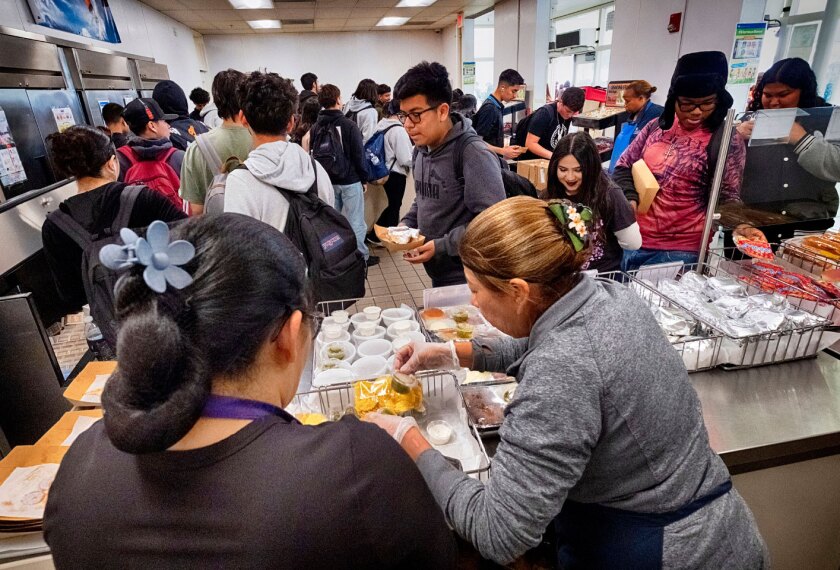The Department of Education unveiled plans this month to provide up to $10 million over the next five years to create four national research centers in education.
The Department of Education provides further information on applying for grants in www.ed.gov/programs /edresearch/applicant.htmleducation research.
Addressing subjects such as rural education and low student achievement, the centers are among the first building blocks giving shape to the department’s new Institute of Education Sciences. That agency, which functions as the department’s main research arm, was formed two years ago to replace the oft-criticized office of educational research and improvement.
The Feb. 4 announcement on the proposed research centers came on top of earlier news that the institute was setting aside up to $50 million in grants over two years to train budding education researchers. (“Grant Program Unveiled for Researcher Training,” News in Brief, Feb. 11, 2004.)
See Also... | |
| Read the accompanying table, “Research Centers at a Glance.” | |
In all, federal officials plan to establish eight research centers over the next two years. They will replace the 10 larger national research centers that once formed the backbone of the department’s old research offices. Contracts for five of those centers have already ended; the rest will expire by 2006.
But national research groups contended last week that the new awards, ranging from $1 million to $2 million a year for each center, would be too small to finance a strong national program of studies in their issue areas.
“These are less than half the average of what the research and development centers were getting before,” said James W. Kohlmoos, the president of the National Education Knowledge Industry Association, a Washington-based group representing many of the clearinghouses, research laboratories, and centers the department supports.
For instance, the Center for Research on the Education of Students Placed at Risk, the largest of the last generation of federal research centers, was initially underwritten in 1996 with a five-year award of $27.8 million. The idea at the time was to give the centers the resources to carry out large, long-term studies that could provide more definitive answers on educational issues.
“We’ve tried ‘mini- centers’ before and found them totally unsatisfying,” said Gerald R. Sroufe, the government-relations director for the American Educational Research Association, also based in Washington.
But Grover J. “Russ” Whitehurst, the director of the Institute of Education Sciences, disagreed. He called the $10 million slated for the centers “a substantial investment and one that’s sufficient to obtain the goals” that federal officials have outlined for them.
Expected to be up and running by the fall, the new centers will address educational problems in two other areas besides rural education and improving low-achieving schools. They are educational innovation and postsecondary education and training.
Methods and Problems
Mr. Whitehurst said that proposals for running the centers would be judged primarily on the programs of studies the plans outlined. “Rather than leaving it to the centers to decide on that once they’re funded,” he said, “we want there to be proposed, specific research projects ahead of time.”
In its formal request for center proposals, the institute also suggests some investigations that researchers could undertake, such as studies of school choice efforts, differential-pay plans for teachers, or alternative programs of teacher certification, that mesh with the department’s ongoing interest in those issues.
The guidelines also reiterate the Bush administration’s preference for specific kinds of research methods, such as randomized controlled studies, in which the experimental and control groups are randomly assigned, or quasi-experimental studies involving closely matched comparison groups.
Fast becoming boilerplate language on all the research requests the department puts out, those specifications have irked education researchers who favor a wider range of study methods.
“I’m delighted the institute is getting back into that field,” said the AERA’s Mr. Sroufe. “But this language seems to suggest that, instead of picking the methodology to solve the problem, you almost have to pick the problem to fit the methodology that you have.”
Student Aid
Research groups were less critical of the department’s plans to pay for up to 10 interdisciplinary doctoral programs for would-be education researchers at colleges and universities. Department officials say the new programs could eventually yield 20 to 25 new researchers a year who could produce the “scientifically based research” called for in the No Child Left Behind Act and other federal education laws.
Mr. Sroufe noted, though, that the model outlined, which calls for forging interdisciplinary links between a wide range of university academic departments and even among different universities, ignores some innovative work education schools are already doing to generate good researchers.
The department’s Mr. Whitehurst said, however, that most educational problems are inherently interdisciplinary.
“The problems in education are incredibly complex,” he added. “And solutions are going to have to emerge from a variety of disciplines.”
Scholars interested in applying for a center grant must submit a letter of intent by March 4. The deadline for submitting such letters for the researcher-training grants is March 11.





